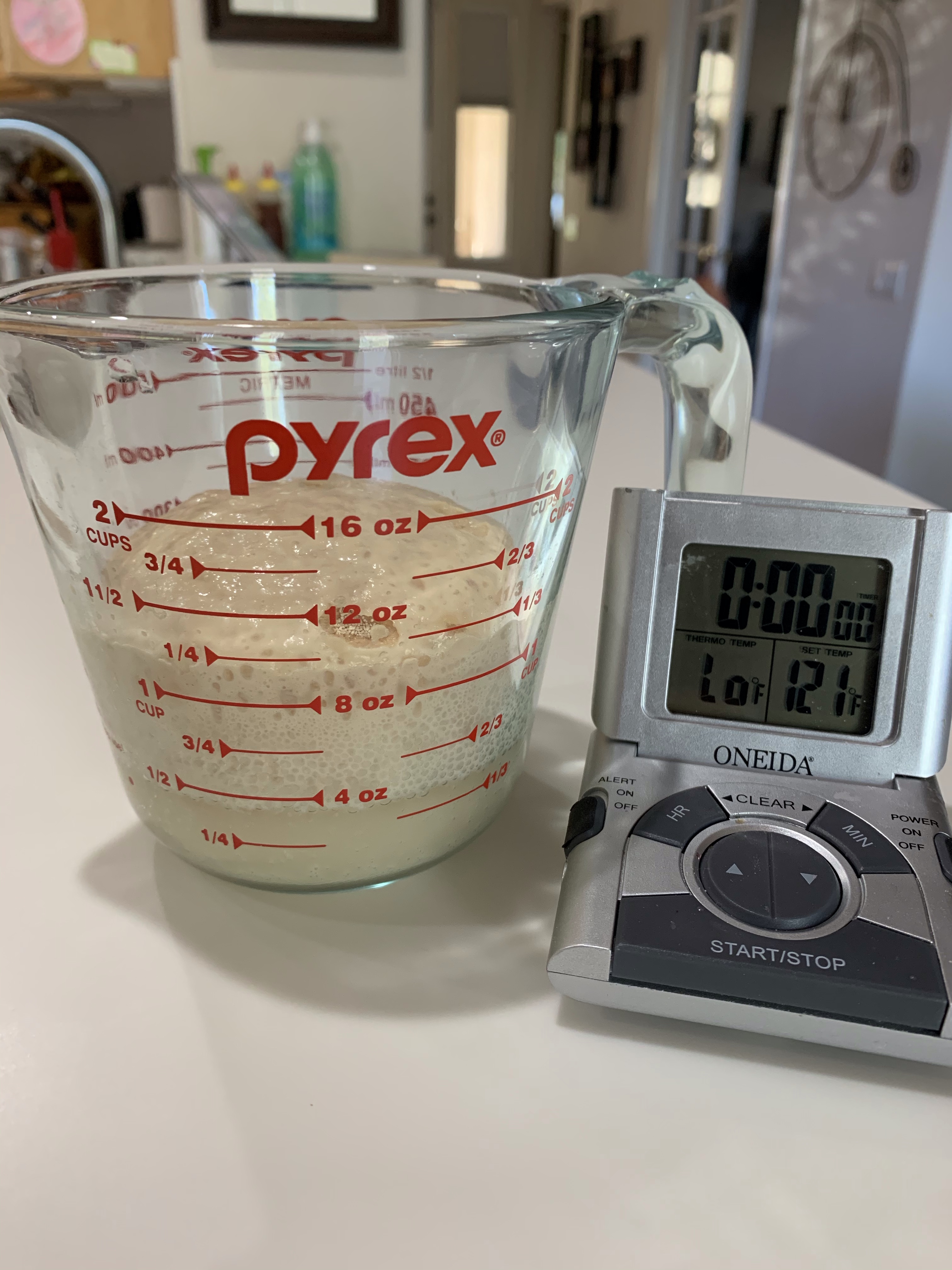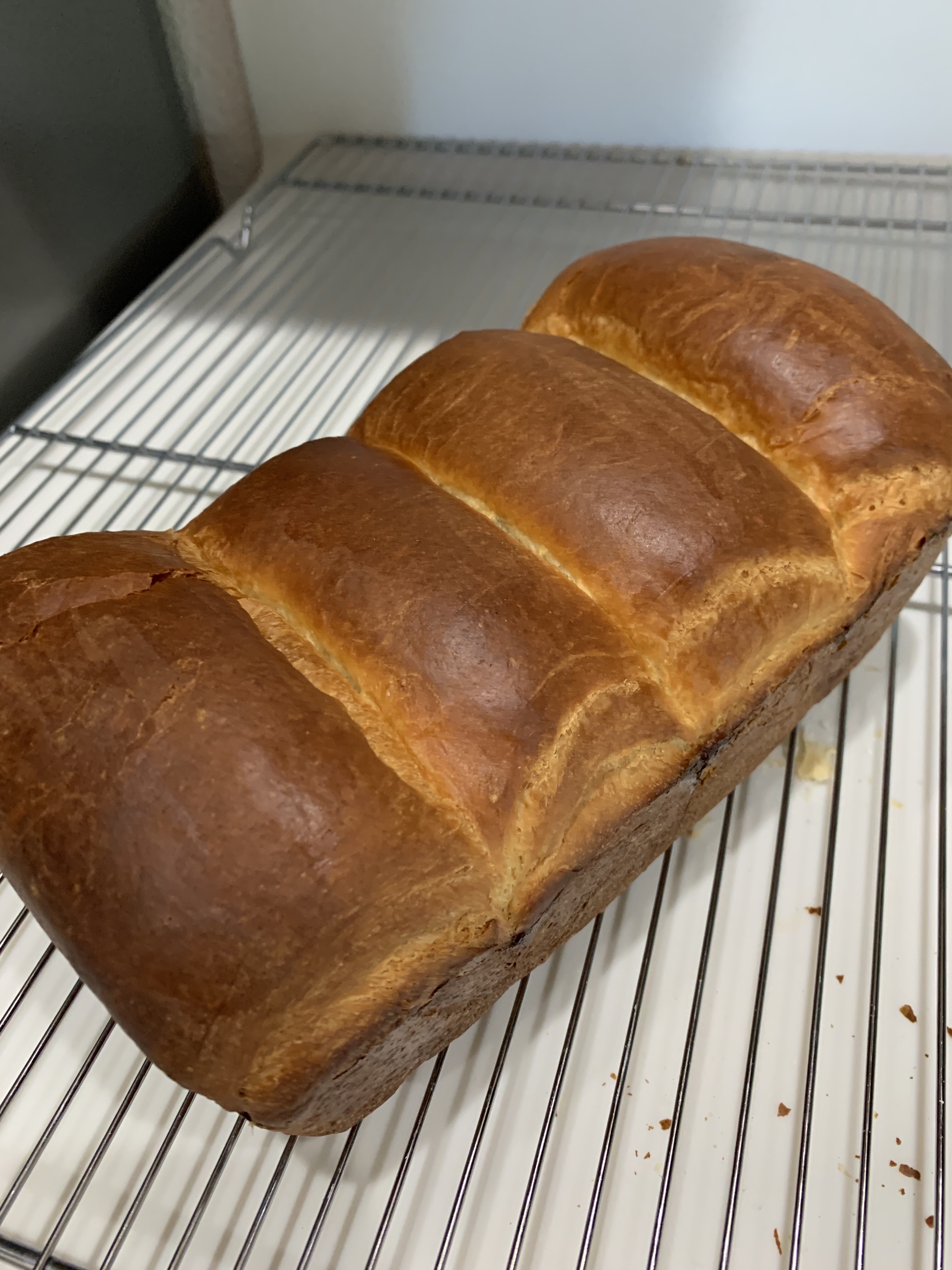Tangzhong was developed in Asia and used in both China and Japan as a method of keeping bread soft and fresh. Tangzhong is a mixture of flour, water and milk, heated while stirring until the “water roux” thickens. The tangzhong is added to the rest of the ingredients and processed more or less normally. The result is a soft, pillowy white bread (see how I cleverly incorporated the title into the body of this post?)
I found the rise and proofing times were much longer that suggested in the recipes. I thought my yeast may have lost potency so I tested it in a water/sugar solution. (1/2 cup water @ 110-115F, 1 tsp sugar, 2 1/4 tsp yeast. Mix and after 10 minutes the mixture should have grown to 1 cup. It was fine. The problem is I now had the beginnings of another bread/pastry or something. QA Department to the rescue—See subsequent post on cinnamon rolls.)
The long proof times were likely due to the cooler temperatures in the kitchen today. (It was only 62F when I started.)
Tangzhong Pillowy White Bread
INGREDIENTS
Tangzhong
• 3 tablespoons (43g) water
• 3 tablespoons (43g) whole milk
• 2 tablespoons (14g) Bread Flour
Dough
• 2 1/2 cups (298g) Bread Flour
• 2 tablespoons (14g) nonfat dry milk
• 1/4 cup (50g) sugar
• 1 teaspoon salt
• 1 tablespoon instant yeast
• 1/2 cup (113g) whole milk
• 1 large egg
• 4 tablespoons (57g) unsalted butter, melted
METHOD
Tangzhong
- Combine all of the ingredients in a small saucepan, and whisk until no lumps remain.
- Place the saucepan over low heat and cook the mixture, whisking constantly, until thick and the whisk leaves lines on the bottom of the pan, about 3 to 5 minutes.
- Transfer the tangzhong to a small mixing bowl or measuring cup and let it cool to lukewarm.
Dough - Combine the tangzhong with the remaining dough ingredients, then mix and knead — by mixer or bread machine — until a smooth, elastic dough forms; this could take almost 15 minutes in a
stand mixer. - Shape the dough into a ball, and let it rest in a lightly greased bowl, covered, for 60 to 90 minutes, until puffy but not necessarily doubled in bulk. (120 min in cool kitchen)
- Gently deflate the dough and divide it into four equal pieces; if you have a scale each piece will weigh between 170g and 175g.
- Flatten each piece of dough into a 5″ x 8″ rectangle, then fold the short ends in towards one another like a letter. Flatten the folded pieces into rectangles again (this time about 3″ x 6″) and, starting with a short end, roll them each into a 4″ log.
- Place the logs — seam side down and side by side — in a lightly greased 9″ x 5″ loaf pan.
- Cover the loaf and allow it to rest/rise for 40 to 60 minutes, until puffy. (I put the dough into a proofing oven for this and let it rise until the tops of the rolls were even with the top of the pan.)
- Towards the end of the rising time, preheat the oven to 350°F.
- Brush the loaf with milk and bake it for 30 to 35 minutes, until it’s golden brown on top and a digital thermometer inserted into the center reads at least 190°F.
- Remove the loaf from the oven and cool it in the pan until you can transfer it safely to a rack to cool completely.
- Store leftover bread, well wrapped, at cool room temperature for 5 to 7 days; freeze for longer storage.






